"A host of environmental factors are threatening to push a crowded capital toward a breaking point."
Get Started for FREE
Sign up with Facebook Sign up with X
I don't have a Facebook or a X account
 Your new post is loading... Your new post is loading...
 Your new post is loading... Your new post is loading...

Cass Allan's curator insight,
March 1, 2015 2:17 AM
differences of opinion about how to classify city age
Norka McAlister's curator insight,
March 15, 2015 7:58 PM
Since the beginning of civilization, rivers have been communities' main job source. Even before B.C., the only one way to survive was to construct houses close to the nearest body of water. In the case of Crocodile City near the Nile river in Africa,the city was built close to the river due to the fertile soil and water supplied by the Nile. This enabled ancient civilizations to survive. Unfortunately, due to religious conflict between communities, some of these original civilizations were forced to relocate. Another reason for relocation is due to the movement of the bodies of water. As the paths of the rivers change, communities are forced to abandon their homes and start new civilizations so to remain close to the waters. All these communities around the river Nile relied on agriculture for its wealth and power. All these cities are examples of civilizations that have inhabited areas near rivers for centuries, even before B.C. Given their habitat, rivers will provide the necessar resources and tools for current and future generations to be able to survive. 
Brian Wilk's curator insight,
March 22, 2015 2:55 PM
Although the question is misleading, it should say what is the oldest continuously inhabited city in the world, I enjoyed the article as once again I learned quite a bit about ancient history. Seems Aleppo, Syria is the apparent winner. They have dated the city to 6000 BC and nomads were there 5000 years before that. Shows the importance of trade as most of the contenders were on a trade route near a body of water. In fact, the article says that Aleppo was very much involved in trade until the opening of the Suez canal. Let's hope that with all the turmoil in Syria that Aleppo continues to thrive for centuries to come. Constantinople and Damascus were serious contenders but could not show continuous habitation. Aleppo according to the article, was a strong contender for commerce alongside Cairo, Egypt. Another contender, Jericho, dates back to 9000 BC but again was not continually inhabited and thus cannot lay claim to the world's oldest city.
Amber Coleman's curator insight,
May 11, 2017 10:59 AM
This article relates to my class because we have just discussed the idea of gentrification. I understood that gentrification was the immigration of richer people to poorer areas, but I didn't realize that it was to the point that people would completely loose their homes. However, I know that it is happening because of urbanization.
Lucas Olive's curator insight,
May 11, 2017 2:38 PM
This article relates to what we have been learning in class because this article explains what gentrification is, which is a big part of urbanization. My opinion on gentrification is that it is not good for most people in the area that is being gentrified, it's only good for a few people, usually they're rich.
Kassie Geiger's curator insight,
May 12, 2017 11:50 PM
Gentrification is the process of converting an urban neighborhood from a predominantly low-income, renter-occupied area to a predominantly middle-class, owner-occupied area. To be completely honest I can see how gentrification can be a good thing and a bad thing. The bad part about it is that people could be possibly moving out of a childhood home or a home with sentimental value. While on the other hand it could be a good thing by building new more modern housing that could check the boxes of people "needs" when they are looking to buy a house, especially first-time buyers. They may want a house with a up-to-date kitchen, 4 or 5 bedrooms, an up-to-date bath or two. I can totally understand that to get things how you want them to be in an older house can be extremely difficult and costly. However, some people may want an older house to pass onto their children, to grow old in.
That's pretty much all I have to say about gentrification without going completely off topic.

dilaycock's curator insight,
August 3, 2014 3:50 AM
I'd never really taken notice, or heard of some, of the architectural deterrents mentioned here. I can't believe that we, as a society, go to such lengths to make life even more difficult for those already struggling.
Alec Castagno's curator insight,
October 3, 2014 1:45 PM
This article illustrates how urban renewal can be carried out without the negative effects usually associated with gentrification. The local government did this by working directly with the residents to ensure the improvements made directly reflect the needs and desires of the people that live there. It led to an improved area that not only provided activities and facilities for the locals but helped reduce the criminals and other unsavory characters that frequented the areas before. As the mayor in the article states, the park worked so much better than the common "policy of more cops and guns".
Alyssa Dorr's curator insight,
December 16, 2014 9:20 PM
This article starts off with a story about a four year old girl named Jessica Lopez. Jessica has suffered severe asthma attacks since she was born. Her condition always worsened in the fall, due to dust rising up from the abandoned fields that bordered her family’s one-room house. Last year, city officials turned the dusty fields next to her house into a beautiful park with trails, playgrounds and shaded pavilions. Oddly enough, Jessica's asthma did not come back that fall. Her mom insists that the creation of this parked saved her life and I couldn't agree more. Most of the pollution and dust were taken out of the environment, thus making it easier for Jessica to breathe. Jessica is just one person that got help out of this. However, the amount of people in that area is equivalent to about 1.3 million. It has to have helped millions of other people as well. The park's lawn are kept nice and green and watered. Solar powered lamps are used to light the park up at night and the park is a great afternoon spot for children and their families. 
Rachel Phillips's curator insight,
February 12, 2015 6:44 PM
Personally, I love stories like this. These people took something that wasn't doing anyone any good, and was just sitting there, and turned it into something that brought the community together. This park brought life to a poor area, even though they really didn't have the means or the money to do so. However, this park can have so many benefits, and it can become an outlet. It can lower crime rates, promote health, bring in people from other cities, etc. |

PIRatE Lab's curator insight,
December 10, 2016 10:30 AM
Another example is the long line of defining the new geography.

Boris Limpopo's curator insight,
December 11, 2016 1:43 AM
Le macroregioni americane con i dati del pendolarismo
Katelyn Sesny's curator insight,
October 31, 2014 11:48 AM
This article asks and answered the question of how and when we will reach a time and place where we live will be limited (as we weigh down the world)? -UNIT 1

PIRatE Lab's curator insight,
August 13, 2014 12:25 PM
For more ESRI maps that let you explore urban environmental change, the 'spyglass' feature gives these gorgeous vintage maps a modern facelift (but not available for as many places). The cities that are in this set of interactive maps are: Chicago (1868)Denver (1879) Los Angeles (1880)Washington D.C.(1851)New York City (1836)San Francisco (1859) |




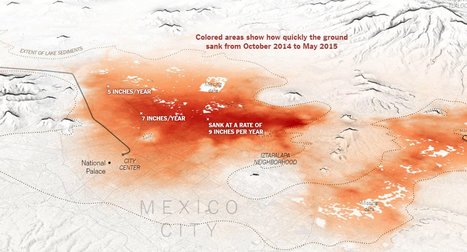


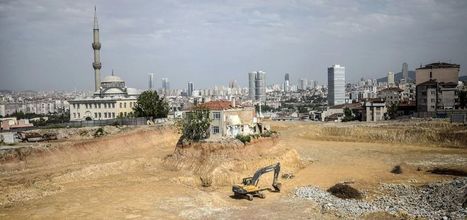
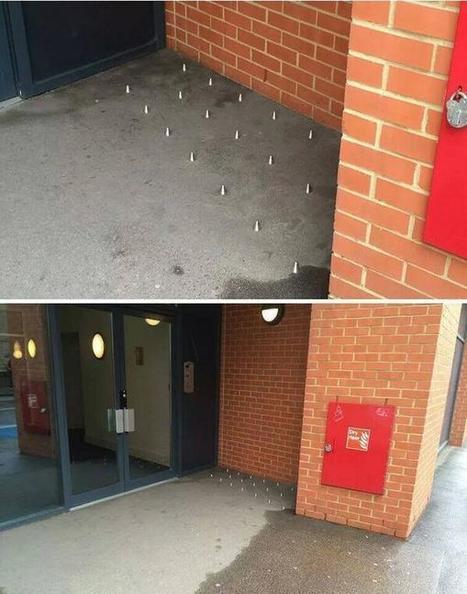

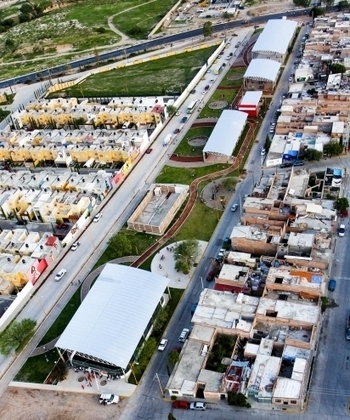
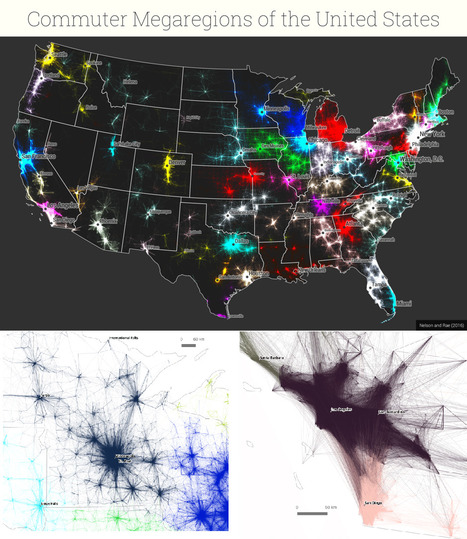



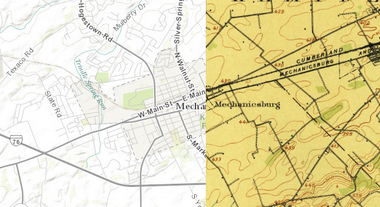

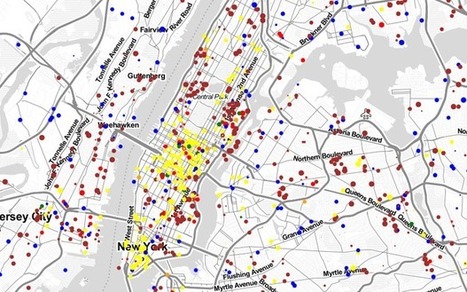





Urban ecology, environmental justice, gendered inequities, primate city politics, the struggle of growing megacities…it’s all here in this fantastic piece of investigative reporting. The article highlights the ecological problems that Mexico City faces (high-altitude exacerbates air pollution, interior drainage worsens water pollution, limited aquifers that are overworked lead to subsidence, importing water outside of the basin requires enormous amounts of energy, etc.). just because the article doesn't use the word 'geography' doesn't mean that it isn't incredibly geographic. All of these problems are at the heart of human-environmental nexus of 21st century urbanization.
Tags: urban, megacities, water, environment, Mexico.